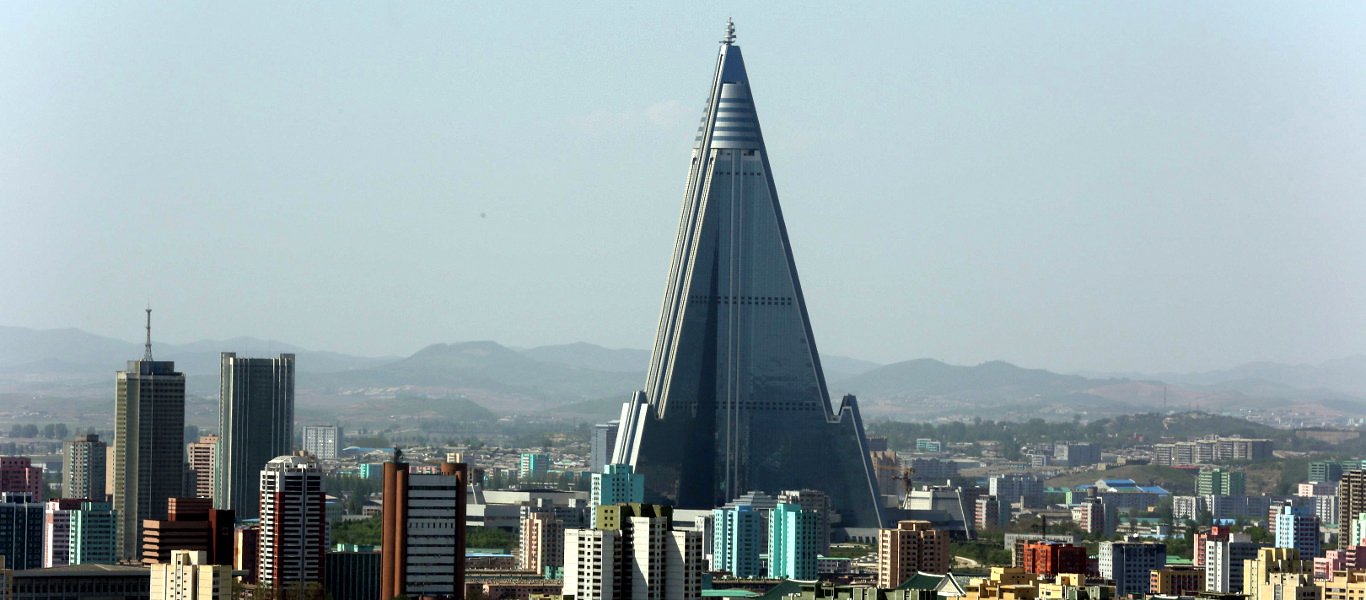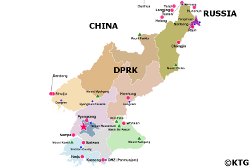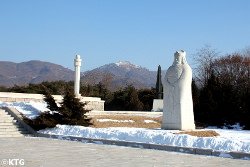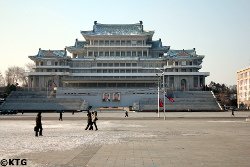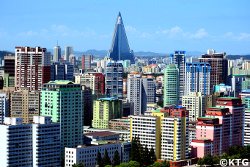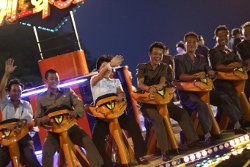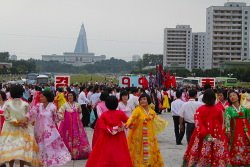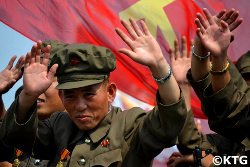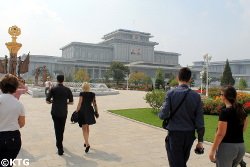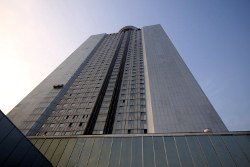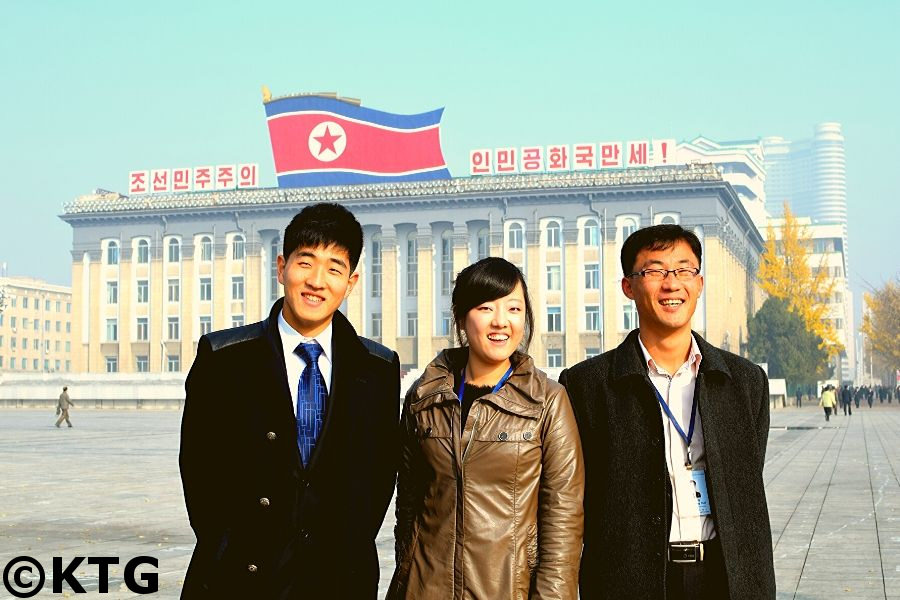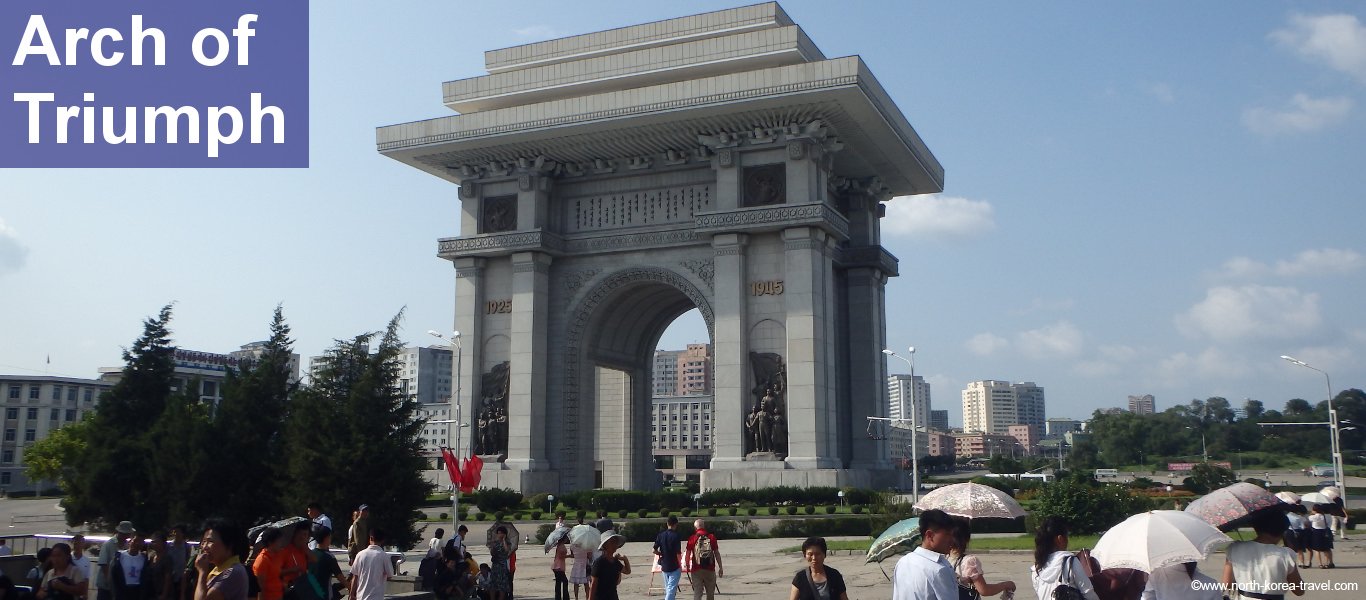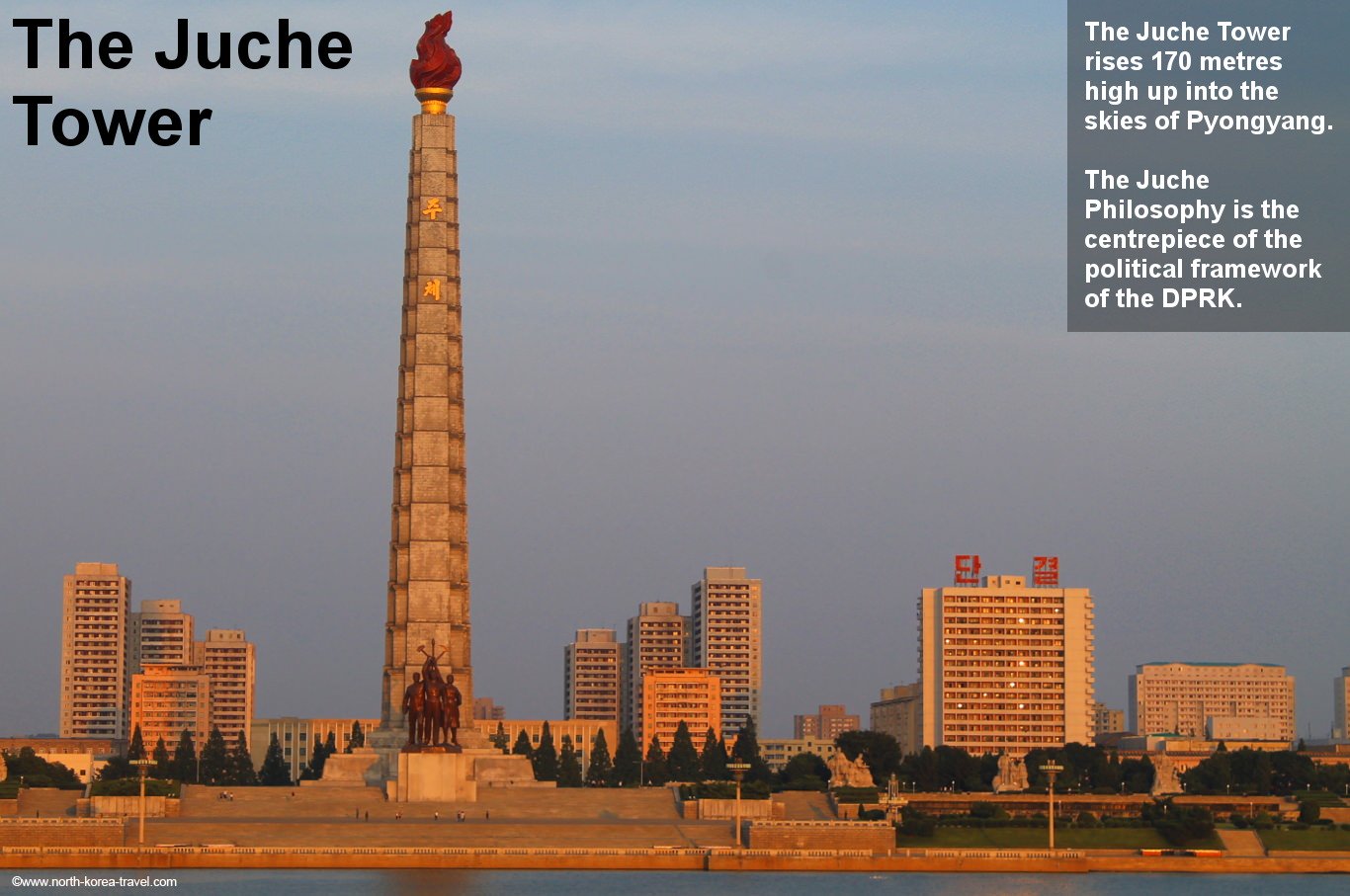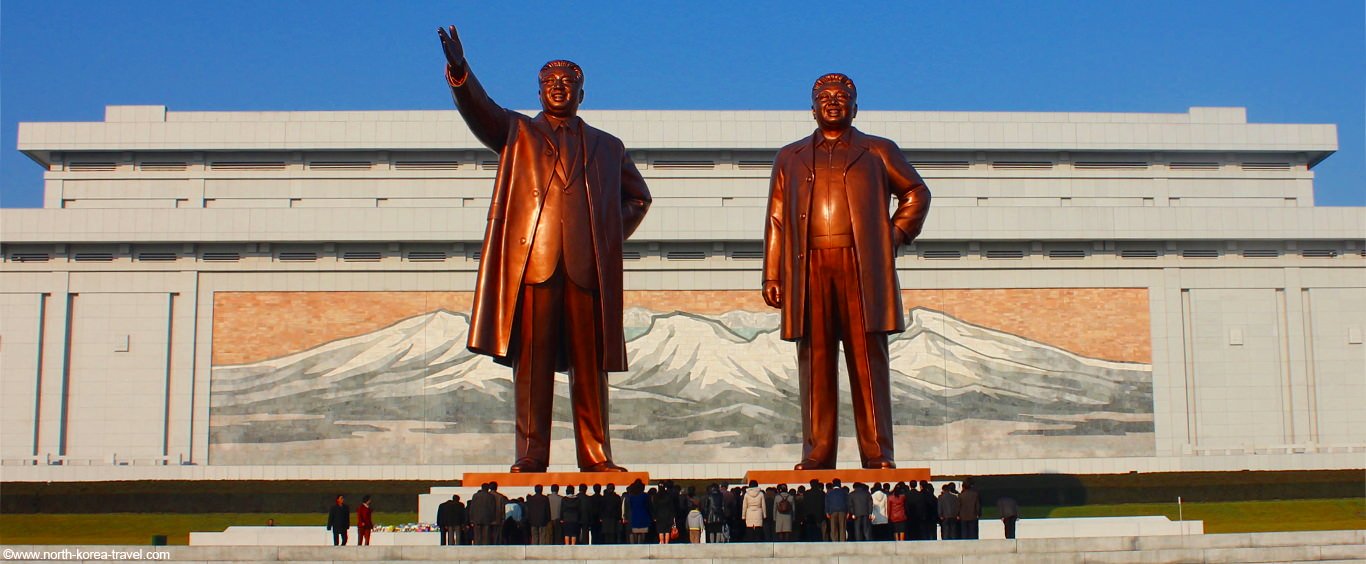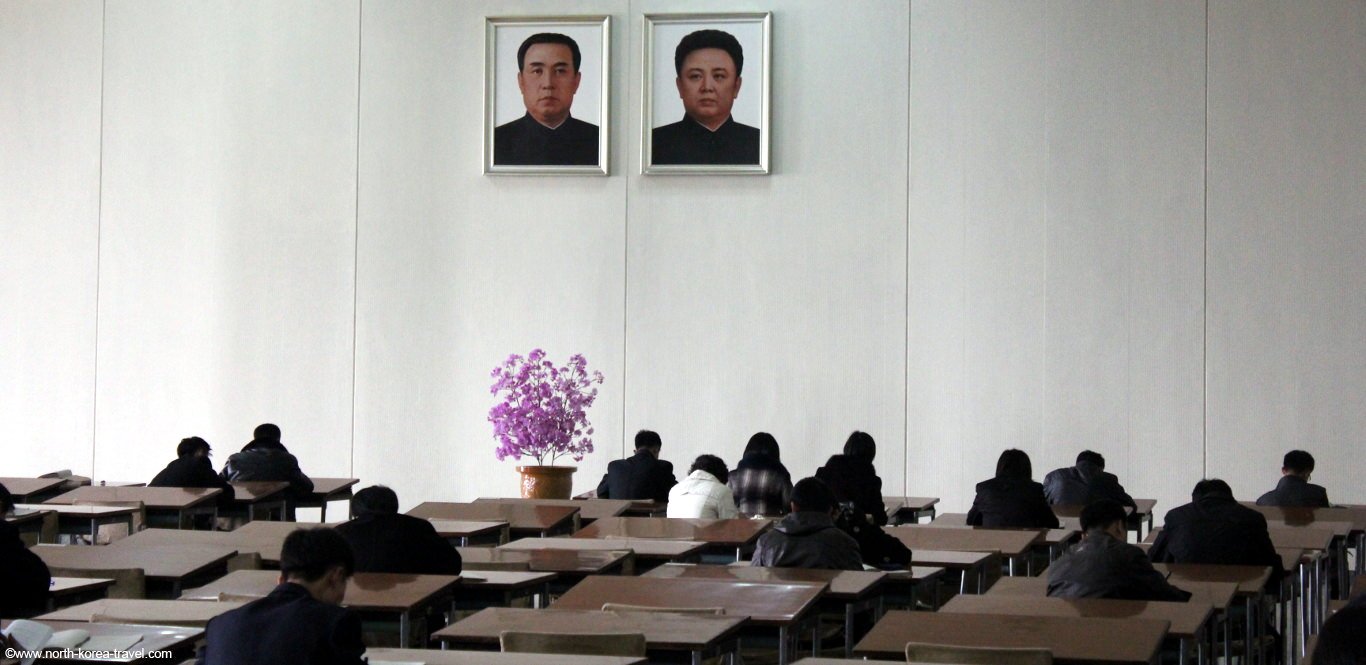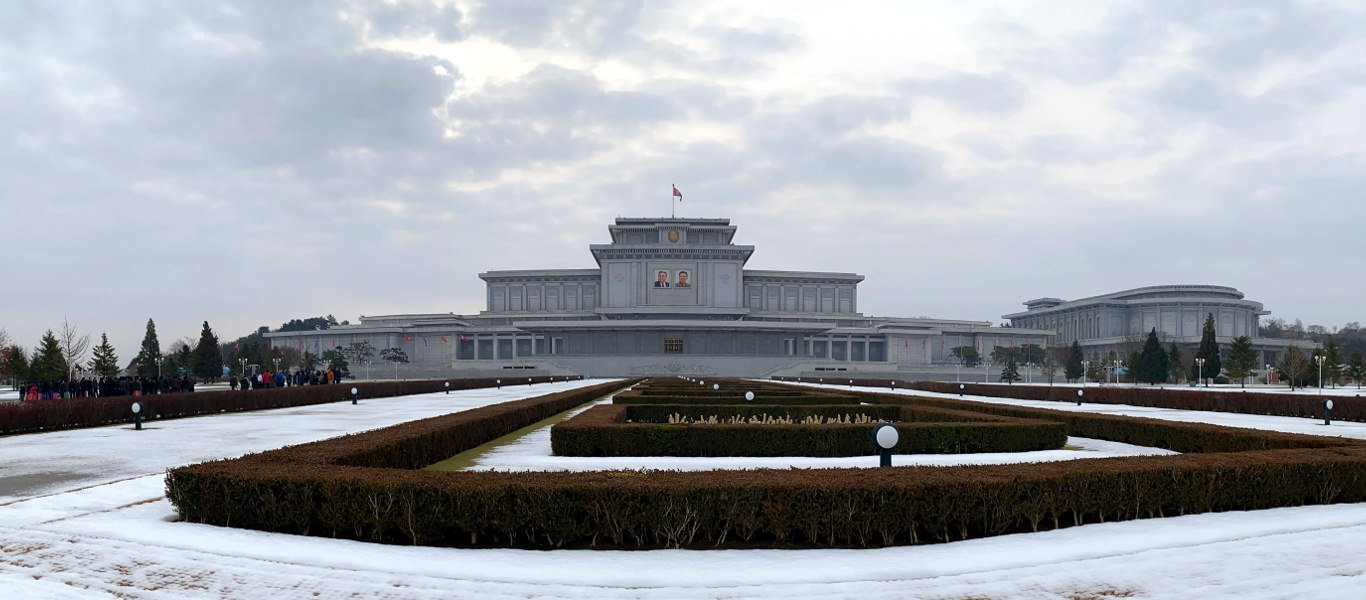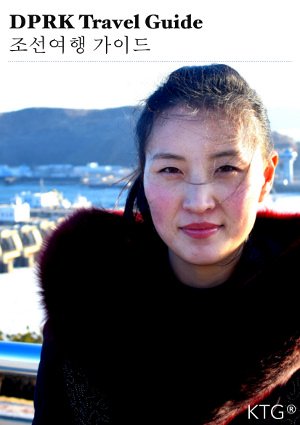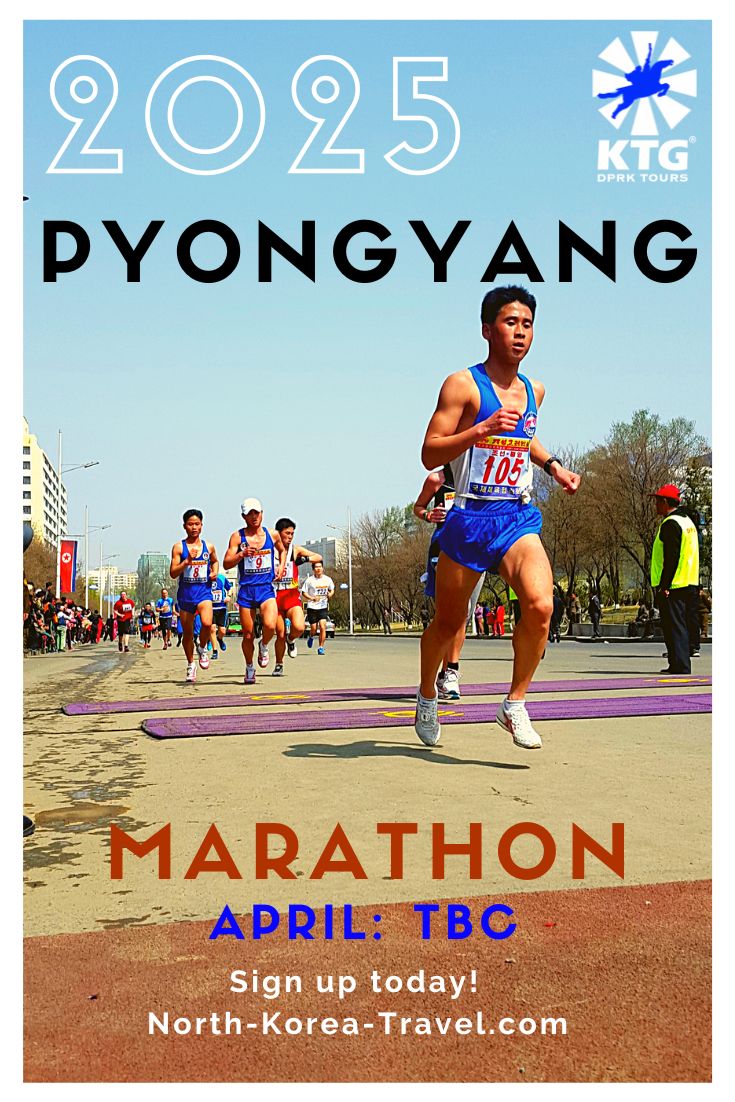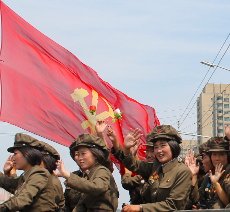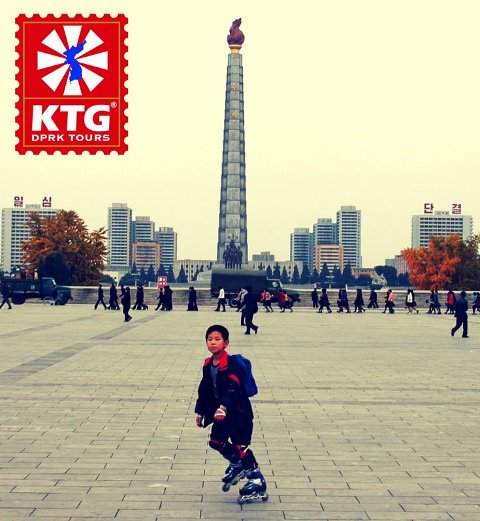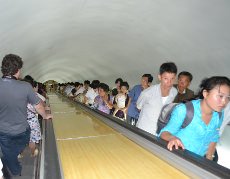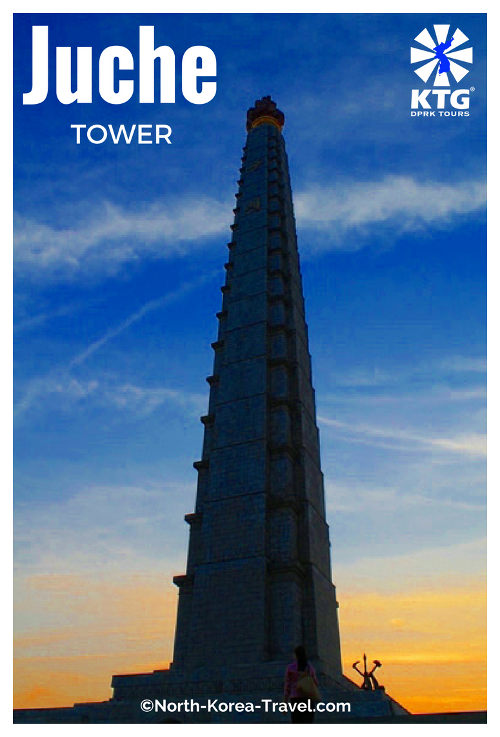Pyongyang; the Capital of North Korea
The Capital of North Korea, Pyongyang, was essentially re-built from scratch after being devastated in the Korean War. Literally meaning "flat land", it is the biggest city in North Korea with over 3 million people living there.
Luckily our group sizes tend to be fairly small with an average of less than 10 members per group and we believe that this allows for greater interaction with locals.
Location
Pyongyang is located in a flat area of the DPRK, remember that about 83% of the country is mountainous, about 50 kilometres east from the west coast of Korea.
Brief History
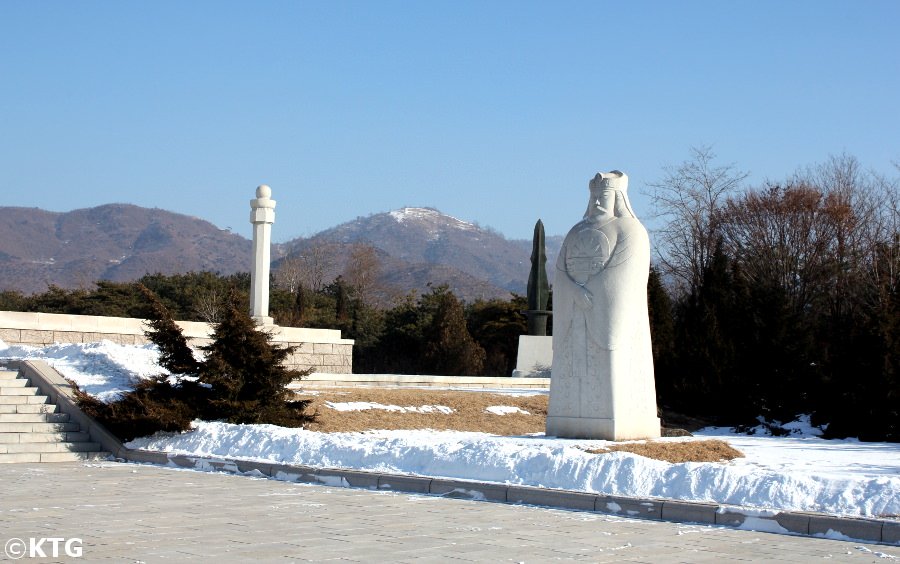
Pyongyang is one of the oldest cities on the Korean peninsula. It was capital of the Kojoson and Koguryo dynasties, the first ancient states in Korea.
The city was made a main industrial hub during Japanese colonisation but severely destroyed during the Korean War. When going to the Korean War Museum in Pyongyang you will be explained that the number of bombs dropped on Pyongyang was equal to the number of the city's inhabitants.
Pyongyang was rebuilt at what is known as Chollima Speed.
What is it like in Pyongyang?
A visit to the capital of North Korea is described by many as a mind blowing experience as are too trips to other areas of the DPRK.
Ladies cheering on people going to work in the morning, Pyongyang
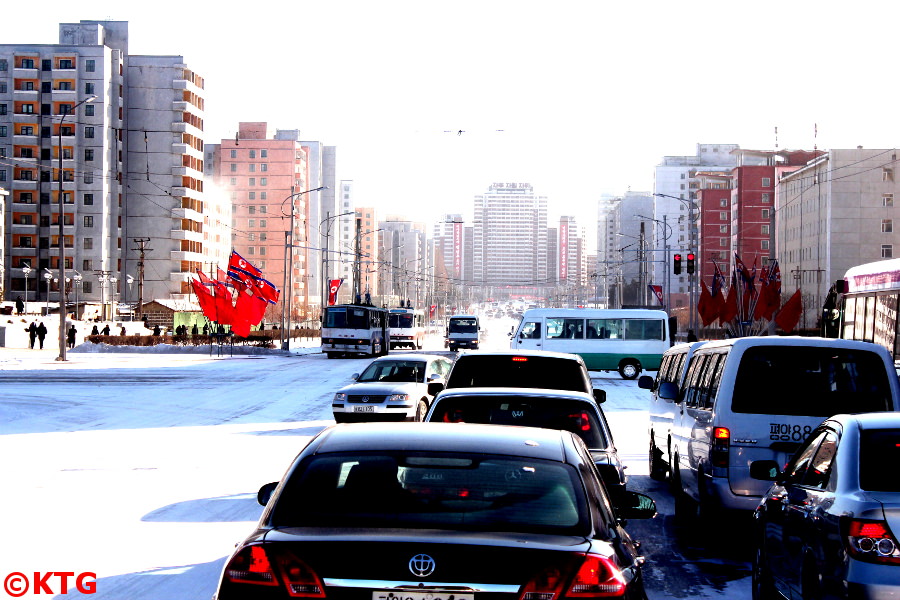
Traffic in Pyongyang, winter 2012
The city consists of wide avenues, grandiose monuments and soviet styled monolithic buildings now blended with futuristic looking high rise buildings, all of which reflect the unique system of the DPRK.
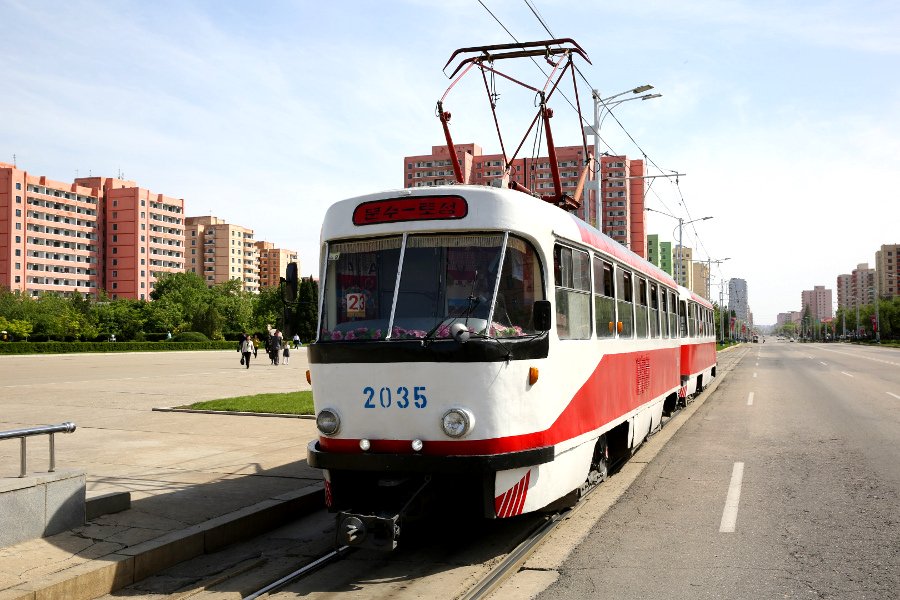
Pyongyang Tram
Commercial billboards and advertisements give way to political slogans and propaganda posters. Trucks packed with KPA soldiers chanting patriotic songs reflect the military nature of the state and parade rehearsals either by soldiers or civilians are a common sight, showing the country's emphasis on the collective over the individual.
But it does have many other aspects to it that we will explore below!
Architecture
The past few years have witnessed a boom in the construction industry in Pyongyang which has literally changed the architectural landscape of the city.
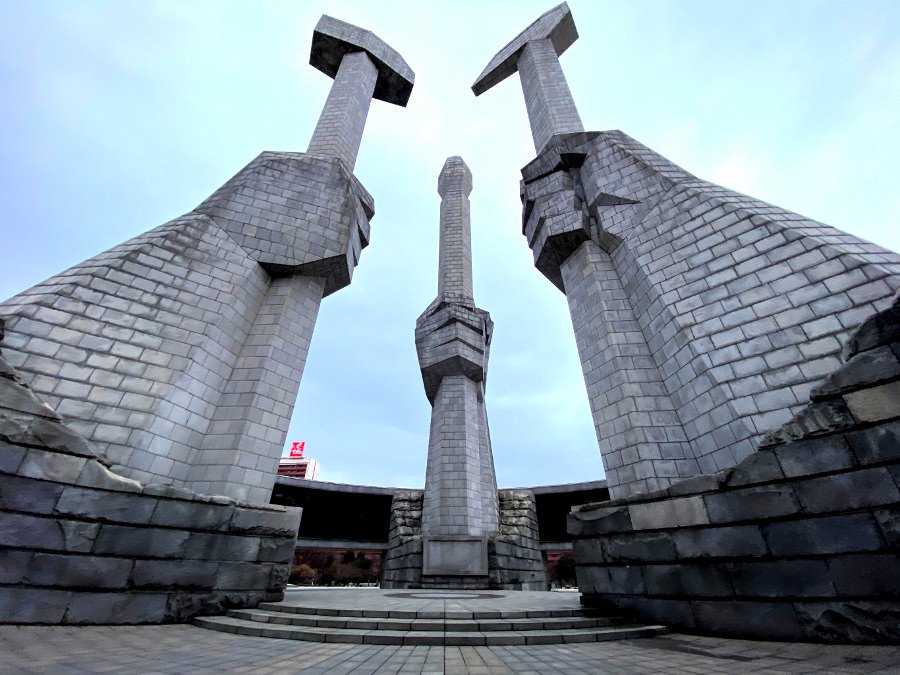
When we first started going to Korea in 2008 buildings where gloomy grey. They have now been repainted in beautiful pastel colours; yellow, green, pink, red, blue...
A lot of construction was carried out to mark President Kim Il Sung's 100 Birthday on 15 April 2012, most noticeably in Changjon street by the Taedong river, where a series of high-rise flats where built.
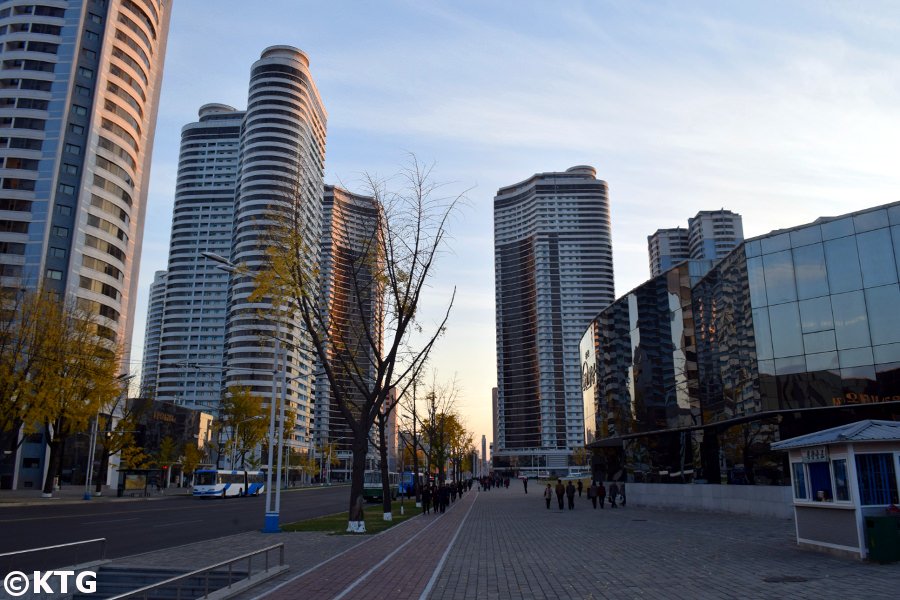
Changjon Street in Autumn
In 2015 we witnessed the construction of Mirae Street aka Scientists' Future street. A beautiful futuristic looking avenue built mainly to host scientists and university professors.
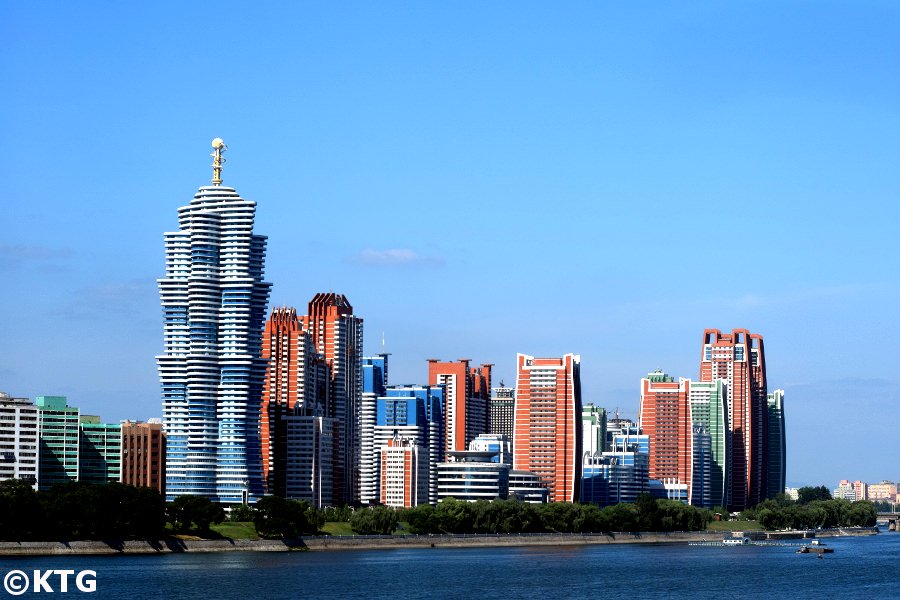
Mirae Future Scientists Street in Summer
2017 saw the completion of Ryomyong street, again a futuristic looking avenue that one would relate more to Dubai or Shanghai.
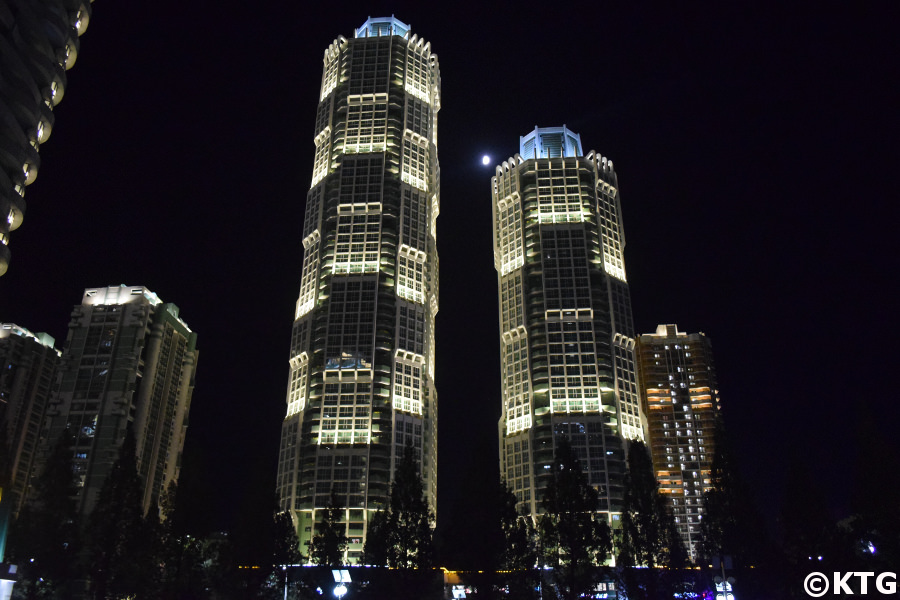
Ryomyong Street
In the meantime new buildings have been incessantly sprouting throughout Pyongyang and restoration has taken place on a large scale. The most obvious example is the Ryugyong Hotel which changed from being a giant concrete shell to a magnificent structure proudly shining day and night.
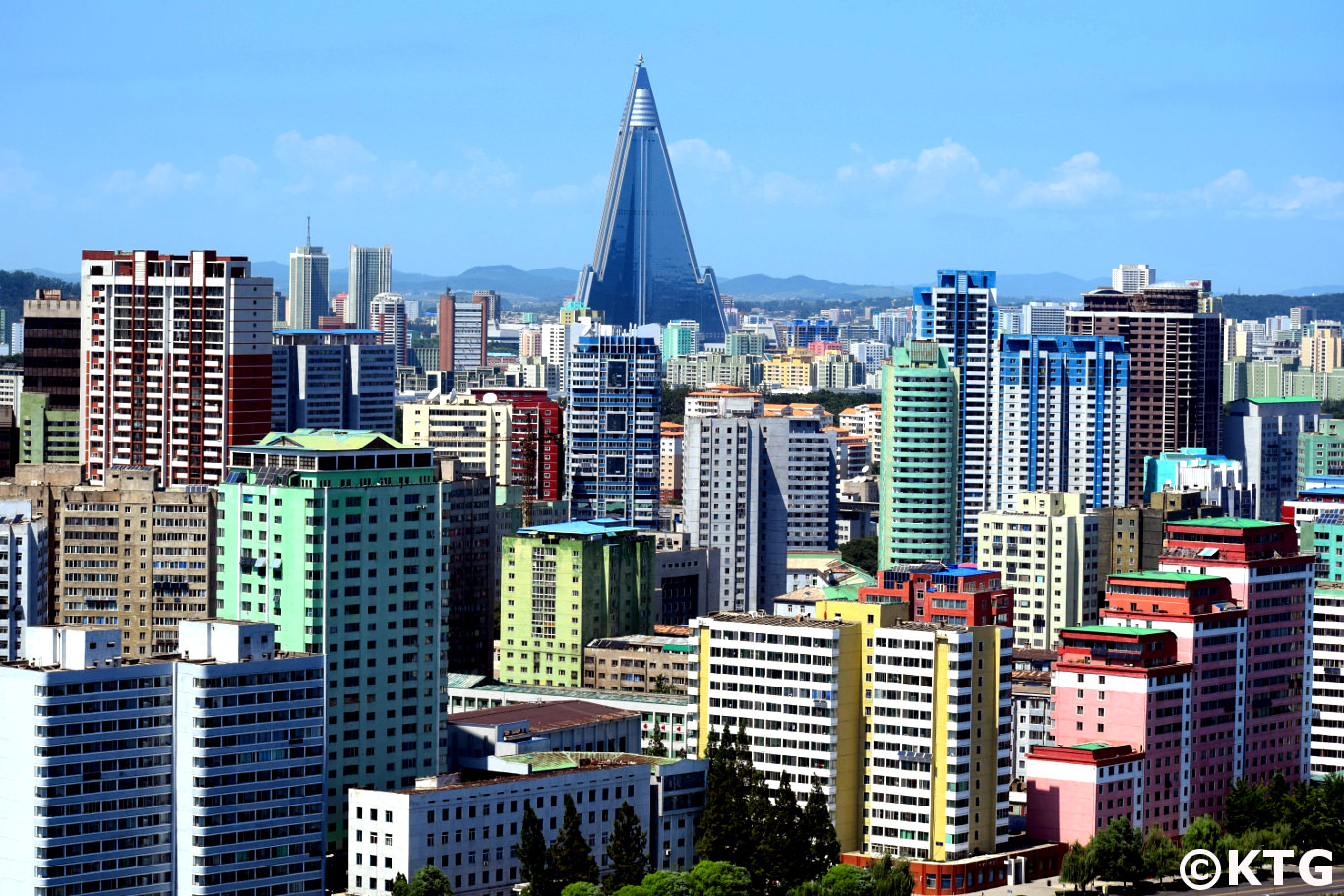
The Ryugyong Hotel shines in the daytime and lights up at night
Entertainment
A visit to the capital of North Korea is not solely about mesmerising monuments, large boulevards and communist styled buildings mixed with modern looking high rise flats; we encourage too visits to places where travellers can see and experience local Pyongyites' daily lives. Joining locals ice skating and visits to local parks and funfairs all allow for engagement with local North Koreans, who in general are always curious at the rare sight of a foreigner.
Munsu Water Park
Definitely a lot of fun and an option we offer more and more on our tours given the great feedback we have had from our travellers. Spending a few hours here having fun and relaxing with locals is an unforgettable experience. Moreover, it has indoor pools and slides as well as outdoor ones, meaning that we can go all year round!
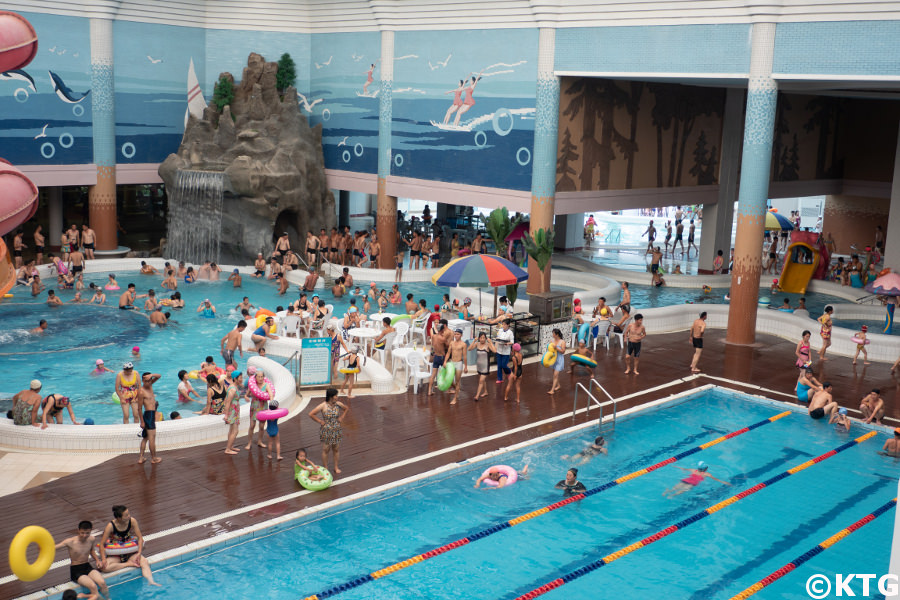
Kaeson Evening Funfair
There are several funfairs in Pyongyang. This is our favourite one. Not to be confused with Kaesong city, Kaeson means Triumphant Return and it is located near the Arch of Trumph, Kaeson Mun 개선문. Hundreds of people gather here in the evenings on national holidays and weekends. Even if you are not feeling brave enough to muster up the courage to take one of the many rides available, it is always fun to see locals laughing their heads off. Tip: if taking the bumper cars you should know that the aim there is to avoid being hit by others!
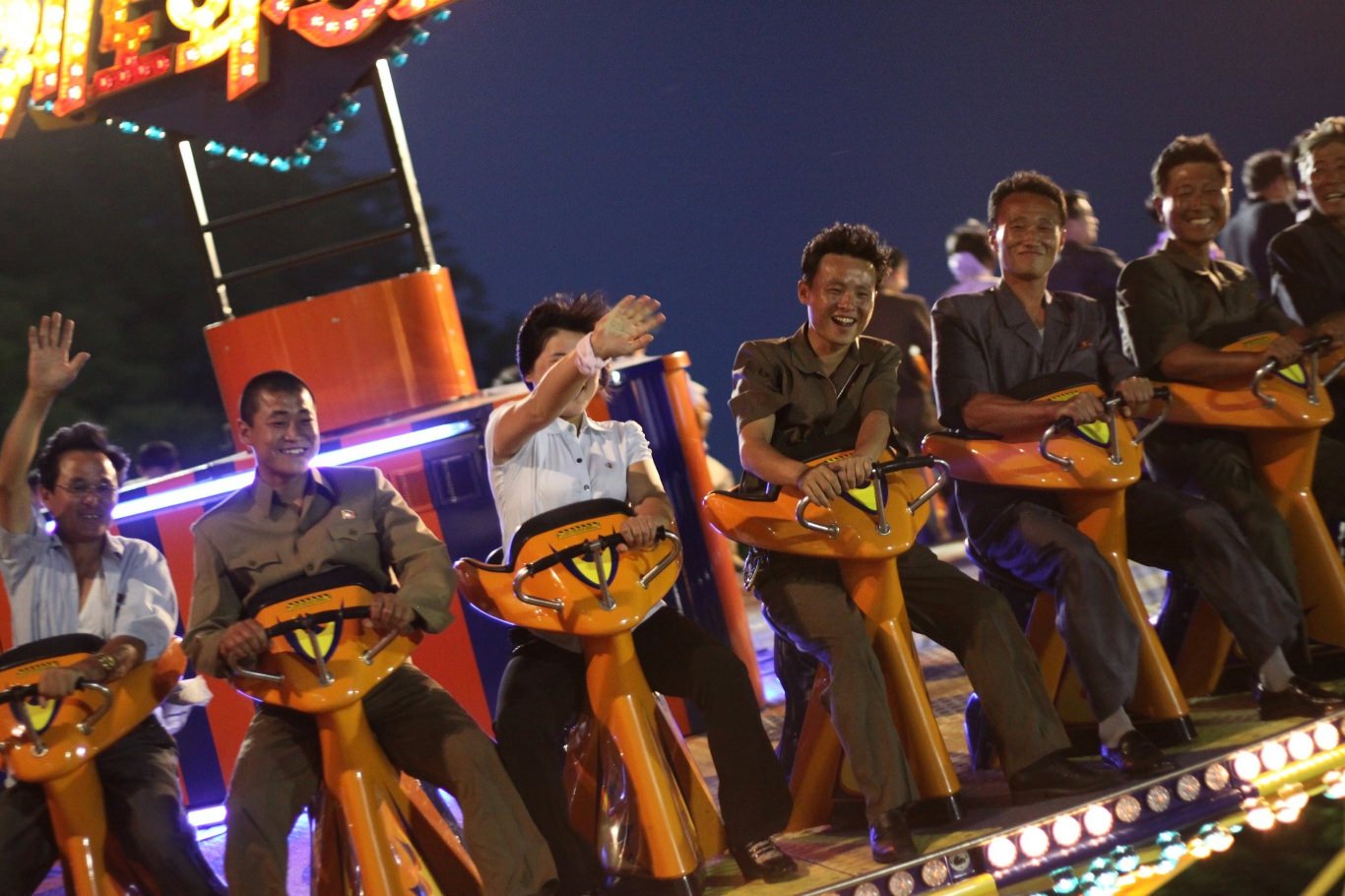
Dolphinarium
Opened in 2012, the water is pumped directly from the West Sea near Nampo. Performers, much to the amusement of the crowd, ask people from the audience to participate in one of their shows with the dolphins and seals.
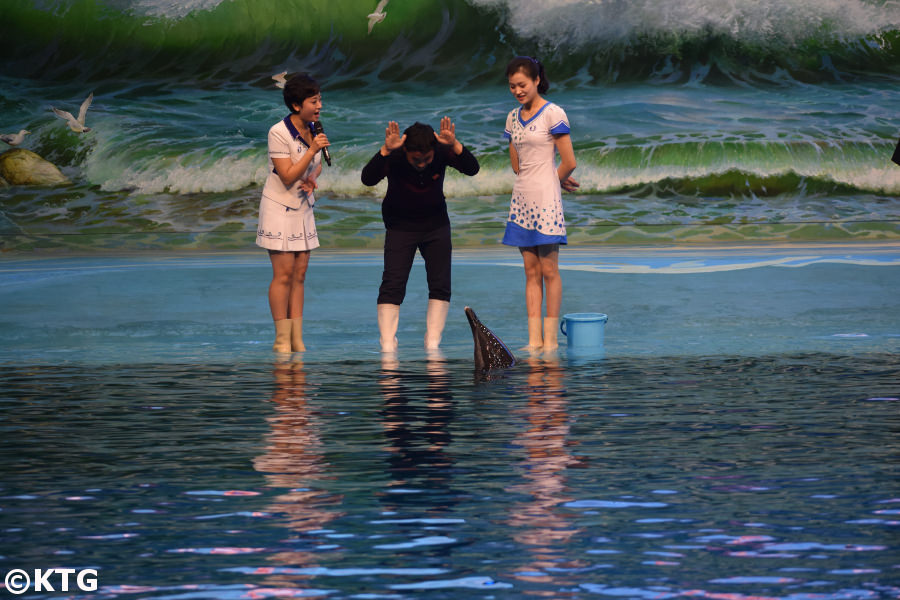
Pyongyang Gold Lane Bowling Alley
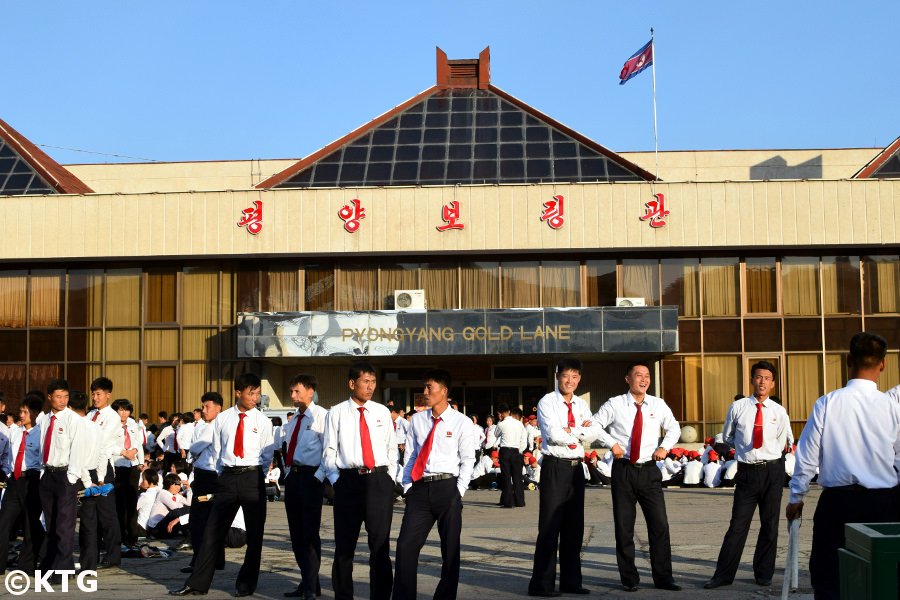
University Students outside the Pyongyang Gold Lane Alley
Locals hang out here hitting their pins, playing 1990s arcade games or having a game of pool. And we can of course join in.
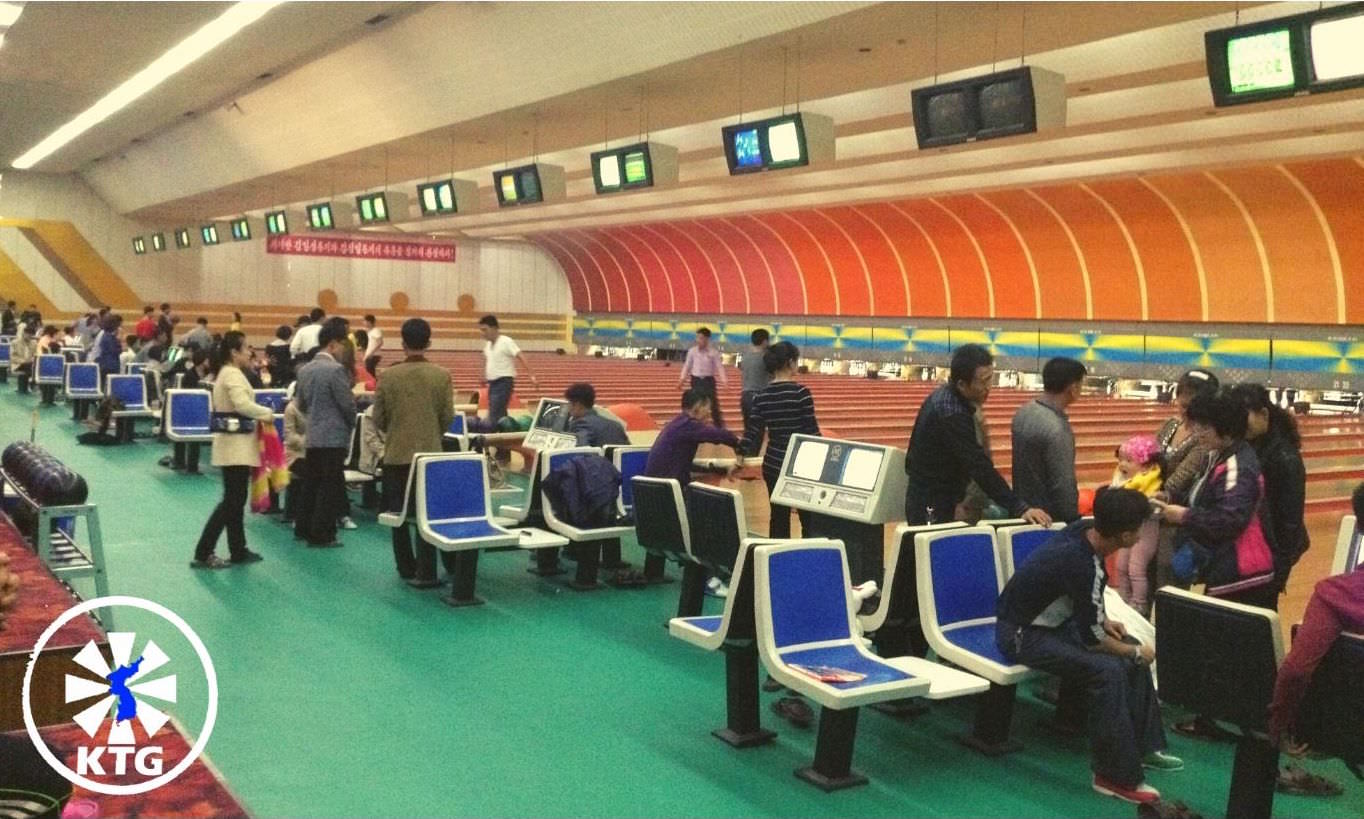
Ice rink
Just across from the Pyongyang Gold Lane Bowling Alley, it is opened all year round.
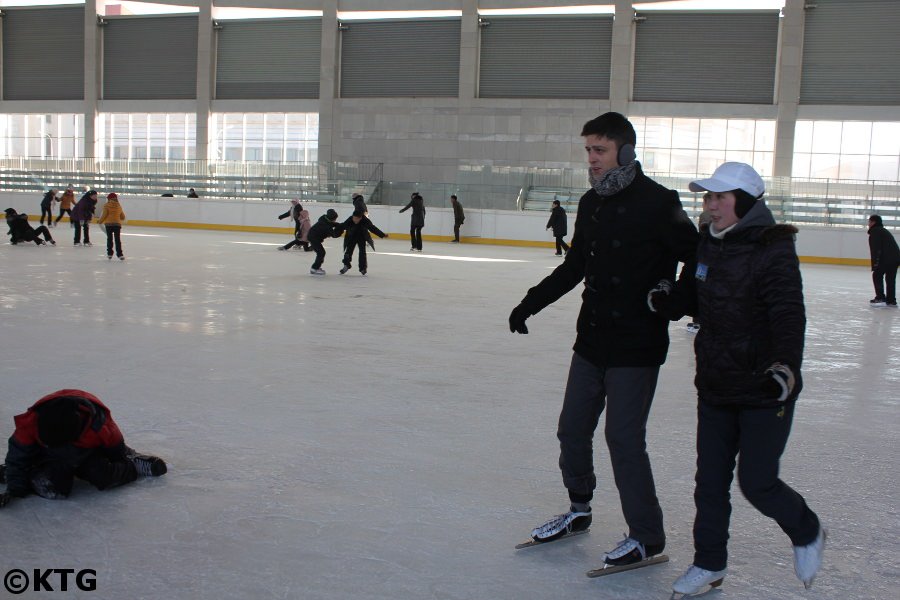
Rayco from KTG trying to learn to ice skate in Pyongyang
Pyongyang Central Zoo
This was renovated in 2016. Many of us are not fans of seeing animals locked up or of zoos in general, but we must admit that conditions in this zoo are impressive. Many locals gather here, and walking around the premises will allow you to freely interact with locals.
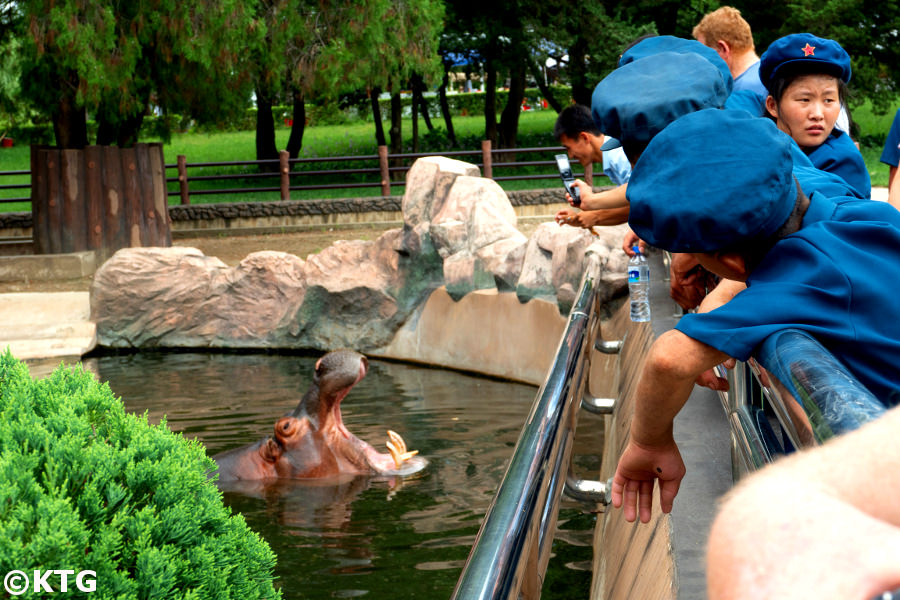
City Walks
Walks around the city, whether through its large boulevards or local neighbourhoods, also provide a unique chance to see North Koreans going about their daily lives. We must be with our guides when going for a walk.
Bike Rides
And, of course, exploring the capital of North Korea on two wheels is a unique way of seeing what Pyongyang is like. Don't believe us? Then please check out our Pyongyang bike tour Youtube video below:
National Holidays
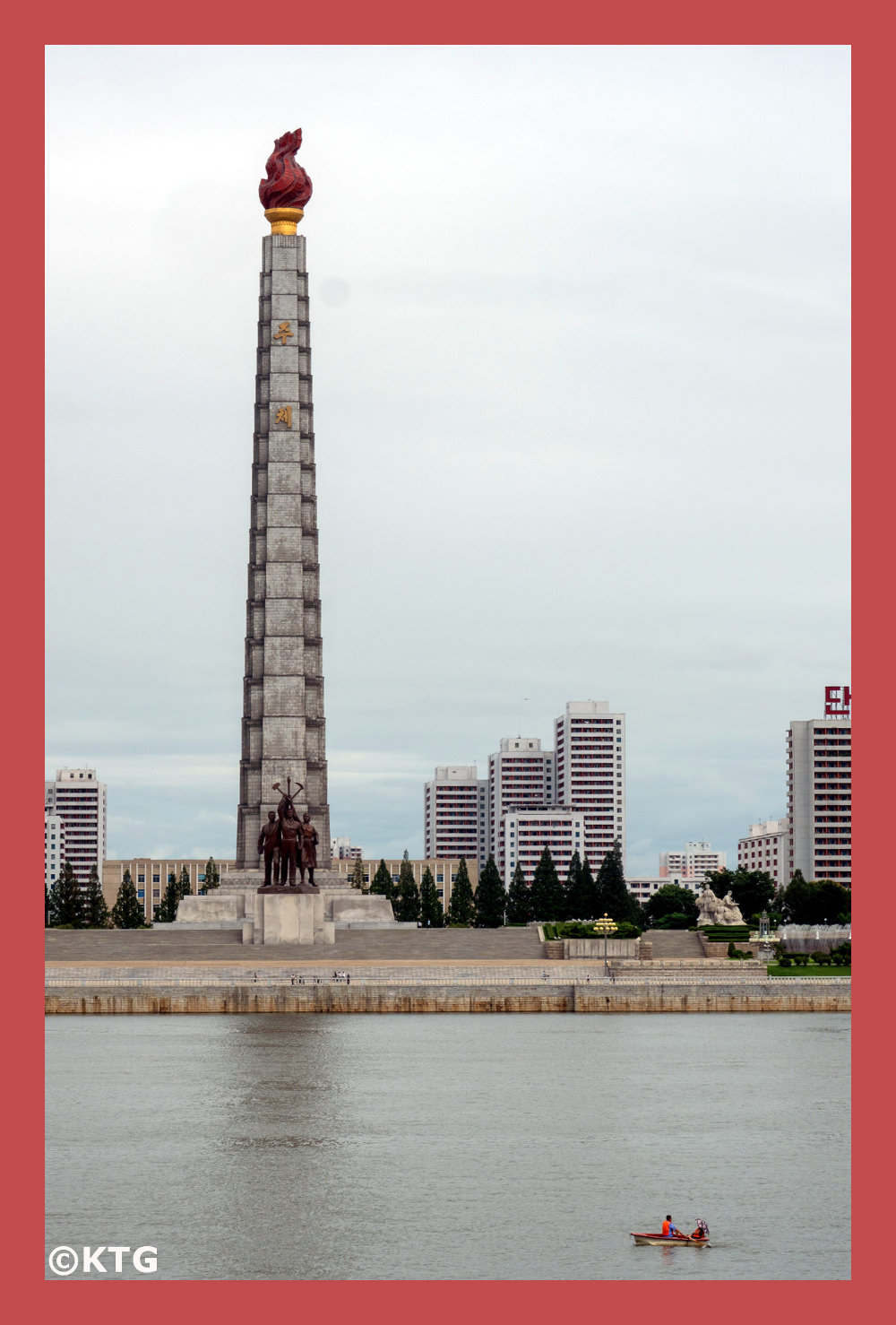
On national holidays we arrange for visits to mass dances where KTG travellers have a chance to join them in the dances! And if you go to Pyongyang when there are no national holidays a Sunday visit to one of the local parks will usually allow for a dance with locals!
These tend to be arranged on important dates such as:
- 16 February (Chairman Kim Jong Il's birthday)
- 15 April (President Kim Il Sung's birthday)
- 27 July (Victory Day)
- 15 August (Liberation Day)
- 9 September (National Day)
- 10 October (Korean Worker's Party Foundation Day)
- 26 December (birthday of National Heroine Comrade Kim Jong Suk referred to as Mother Kim Jong Suk)
As for extravagant firework displays, these usually take place on:
- 16 February (Chairman Kim Jong Il's birthday)
- 15 April (President Kim Il Sung's birthday)
- New Year's Eve
We tend to join literally thousands of locals at night to Kim Il Sung Square to see the firework display.
May Day is another fabulous time to be in Pyongyang. We usually go to Mt. Taeson and partake in a variety of sports and games with locals. Please check our May Day video below for a taster!
Military Parades
Nowhere as common as people tend to think. How many of us associate Pyongyang / North Korea with tanks, missiles and thousands of soldiers goose-step marching in perfect sync? However, they only tend to be held on major anniversaries of certain national holidays. We have been for example to see soldiers coming back from military parades on the 70th, 75th anniversaries of major national holidays such as National Day, Party Foundation Day or major anniversaries of the birth of the Leaders.
Highlights
Highlights of Pyongyang include the impressively deep Pyongyang Metro, the Juche Tower and the Arch of Triumph (which is taller that the Parisian one!).
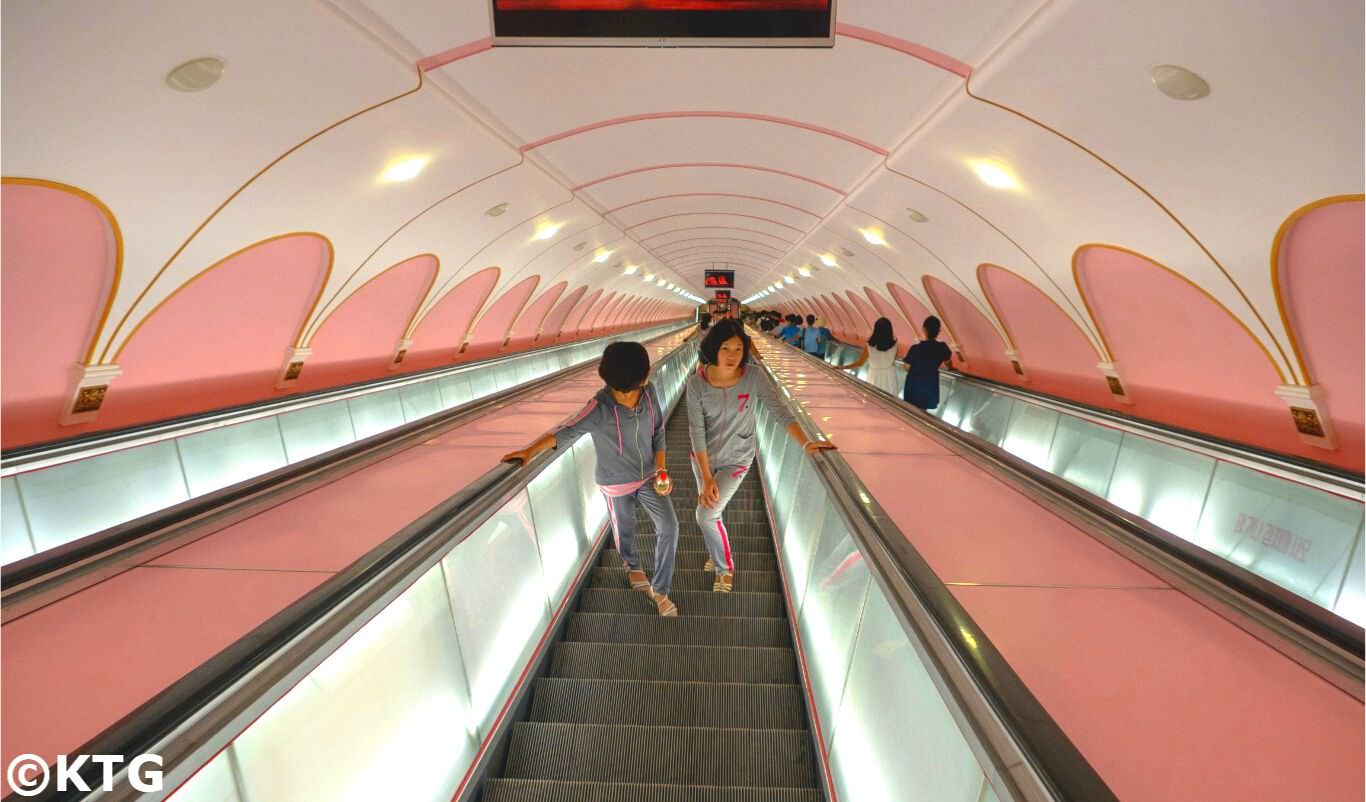
The Pyongyang Metro
Non-tourist places such as the Kumsusan Palace of the Sun or the Mansudae Grand Monuments are truly impressive. We have to remember that they are not tourist sites and have to strictly follow guidelines set regarding how to behave there. You will be fully briefed before the tour.
Please check our places to visit section to see brief descriptions of sights available in the capital of North Korea.
Hotels in Pyongyang
Hotels are generally in better conditions in Pyongyang than outside of the capital, but we always recommend a visit to other areas of the country in order to have a wider view of life in North Korea.
We arrange for our groups to stay at one of the best hotels in Pyongyang either the Yanggakdo or Koryo Hotel but there is a great variety of hotels for you to stay at in the capital city. Please check our Pyongyang Hotels page for more information.
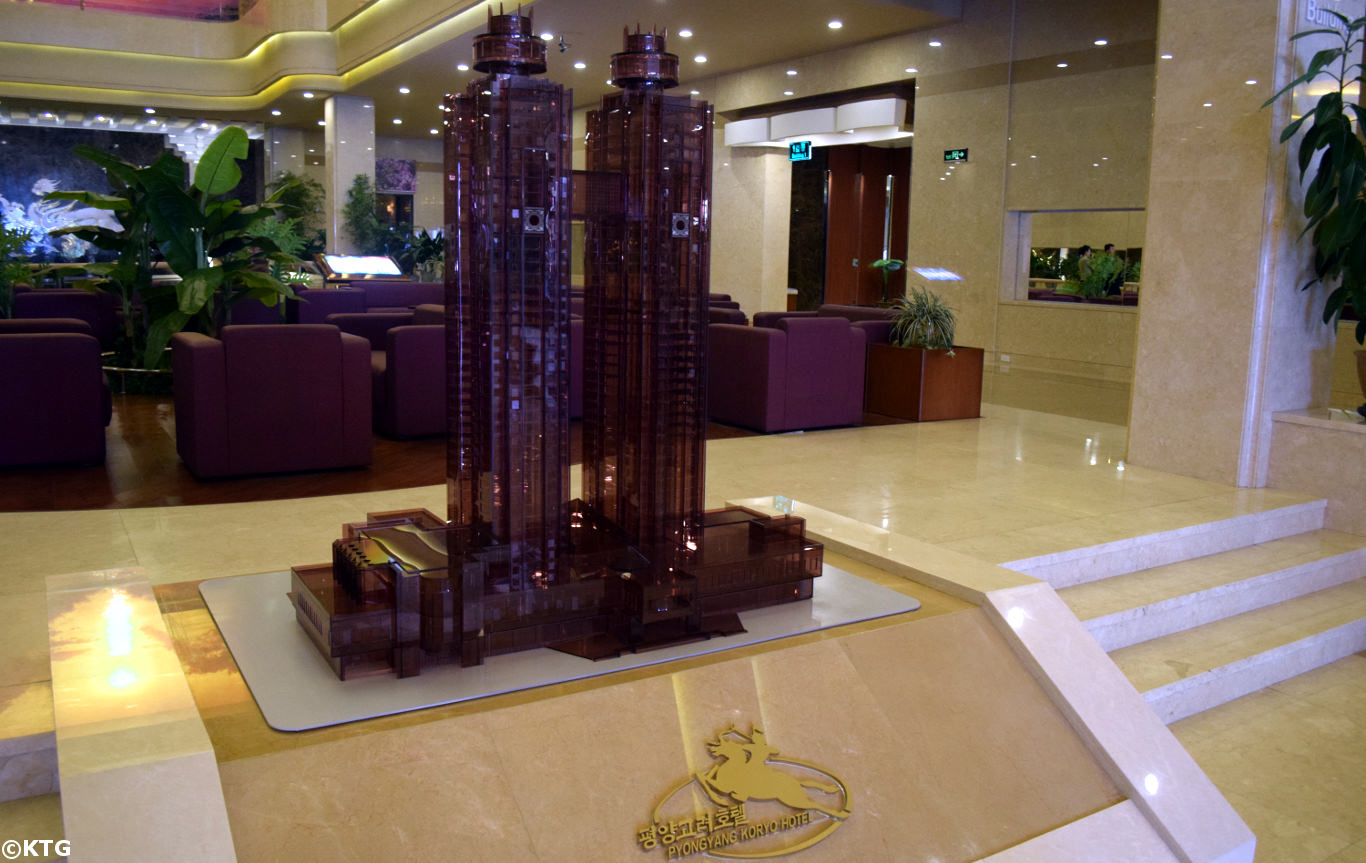
Want to explore further from the capital of North Korea? Then please check out our "where to go" page where you can see places that can be visited all over North Korea.


















